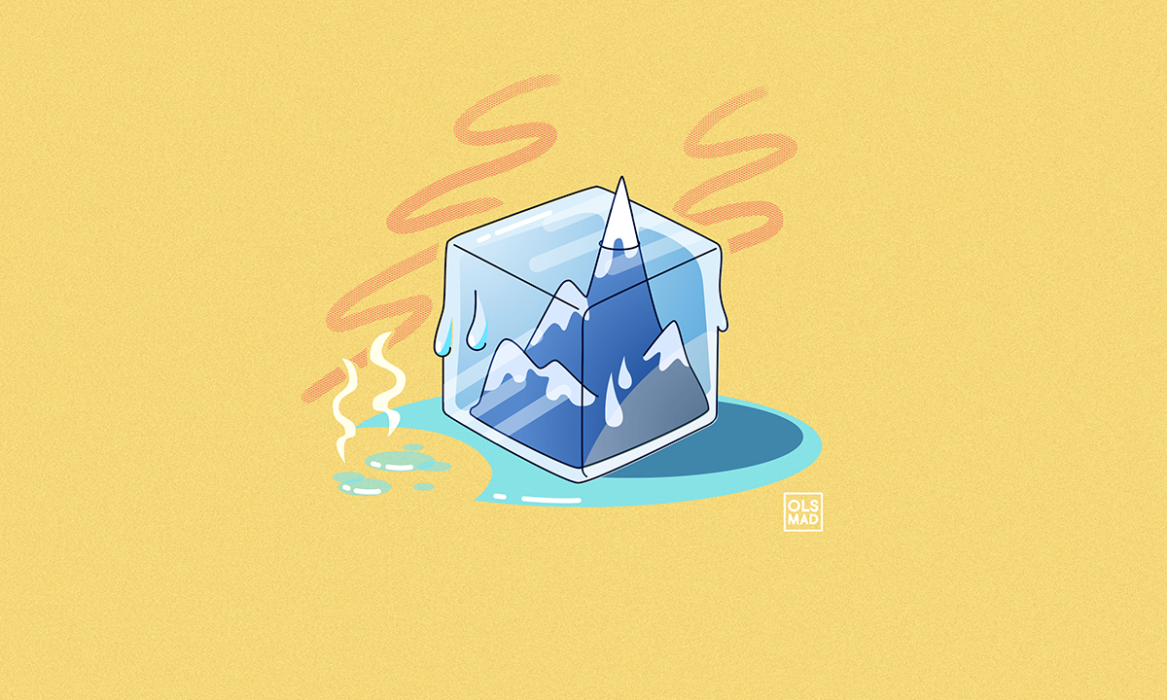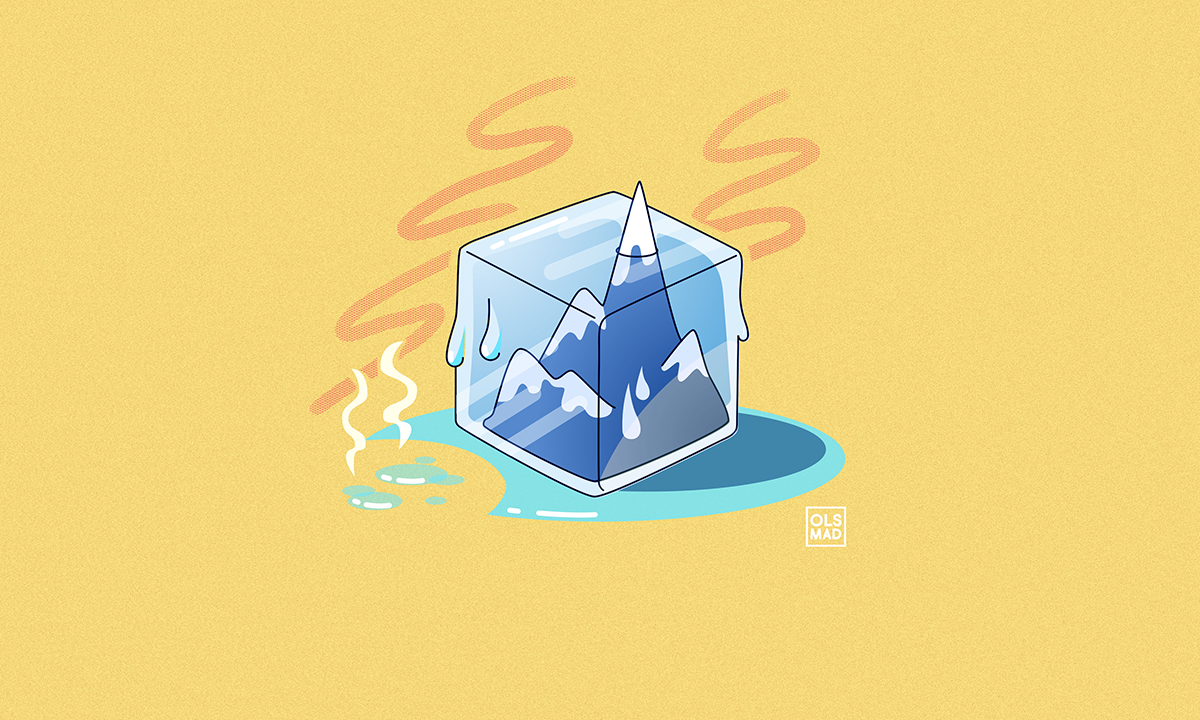
A strange thing happens during particularly wet winters in California: farmers flood their fields. Never mind that crops are dormant and soil is already saturated — these farmers are more concerned about what lies beneath their land. Aquifers are the last line of defense against drought conditions. By flooding their fields in January, farmers hope to fill these underground reservoirs with water they can use in August.
If a trio of recent studies proves accurate, one can expect to see this method deployed more regularly. Combined, the reports paint a bleak picture: Amid one of the worst droughts of the last 1,200 years, we’re seeing less reliable snowfall, which could dramatically affect agriculture in three key Western basins. Warmer temperatures mean winter precipitation will come more often as rain than snow — a change our current irrigation regime wasn’t built to withstand.
But don’t toss this information into your coronavirus-era heap of gloom. Now is the time for water managers to utilize these projections and make sound investments in resiliency.
Want even more Bitterroot analysis? Sign up for our newsletter.
“The main thing is proactively planning and bringing climate change and changes in snowmelt into the conversation,” said Nathan Mueller, an assistant professor at Colorado State University and an author of one of the studies. “We want people to be thinking about the core issue.”
The first thing to account for is that large swaths of the West are experiencing historic aridity. By analyzing tree-ring data, a team of researchers from Columbia University, the University of Idaho, and other institutions determined that we’re in the middle of a drought that’s downright biblical — and it might last for a long time. The study, published in the journal Science, concluded that 2000-2018 was the second-driest 19-year period in the Southwest in the last 1,200 years.
“We now have enough observations of current drought and tree-ring records of past droughts to say that we’re on the same trajectory as the worst prehistoric droughts,” lead author Park Williams, a bioclimatologist at Columbia University, said in a release.
Just four dry spells during the 1,200 year period researchers focused on lasted a full 20 years, putting our current predicament in rare company (one of them, in the 1200s, led ancestral Puebloans to flee Mesa Verde). But those previous droughts were caused entirely by natural fluctuations in climate; this one, researchers concluded, has been caused in large part by manmade climate change. Combine modern climate change with the conditions that sparked prehistoric droughts and, well, lord help us.
Warmer temperatures, as you might expect, will lead to less snowfall. That’s where the work of Mueller and colleagues at the University of California, Irvine, and the Ohio State University comes into play. Utilizing climate projections from around the globe, Mueller and company found that farms in the Colorado, San Joaquin, and Columbia river basins are among those most at risk to reduced runoff from melting snowpack.
Their study, published in the journal Nature Climate Change, projected which agricultural systems reliant on snowmelt might be most stressed by a warming climate. Combining runoff projections with other water infrastructure and political factors, the researchers developed a “snowmelt hazard index”, and their findings are downright hazardous for Western farmers. Warm up the climate 4 degrees Celsius (about 7 degrees Fahrenheit), and researchers estimate snowmelt’s share of irrigation could dip from 38 percent to 23 percent in the Colorado basin. Along the San Joaquin River, it’ll fall from 33 to 18 percent.
“Without water, you don’t have yields. You don’t have production, especially in an arid region such as the West,” Mueller said. “You could roughly translate it to area. If you have 15 percent less water coming from snow, does that mean we have to have 15 percent less area devoted to agriculture?”
Bitterroot hinges on reader support. Contribute to our reporting today.
Snowpack in the West is not only shriveling — it’s becoming a less reliable predictor of water supply altogether, which puts cities at risk, too. Typically, water managers make a whole lot of decisions based on snowpack levels on April 1, because they assume steady snowmelt over the summer. No more. Researchers at the University of Colorado Boulder figure that snowpack won’t be a reliable drought predictor in 83 percent of the West by the end of the century.
Before we started pumping carbon dioxide into the atmosphere with abandon, snow would fall in the mountains and melt slowly over the course of a summer. In effect, accumulated snow serves as our biggest reservoir — it stores winter precipitation for when we need it in the summer. But global warming throws a wrench into everything.
For one, researchers have observed a decrease in “runoff efficiency.” Thanks to evaporation and other products of a warmer climate, the same amount of snowfall will produce less streamflow than it would have, say, 50 years ago.
Further, a healthy snowpack can get zapped by our increasingly common spring heatwaves, as was the case during a “wet drought” in the Pacific Northwest in 2015. And, as mentioned earlier, more winter precipitation is going to fall as rain instead of snow — in the San Joaquin basin, for instance, February rainfall is projected to increase 74 percent if the climate warms 4 degrees Celsius.
We’re not yet sure how to account for all of that. How much of that water evaporates, or flows straight to the ocean? How much soaks into the ground? These are the questions water managers must answer in the coming years, because simply measuring snow depth isn’t going to work.
Researchers say now is the time to utilize this information and start adapting. First, we need to get in our heads that there’s going to be less water to deal with, and its delivery is going to be less consistent. Forget drought contingency plans, members of the Colorado River Research Group wrote in 2018; now is the time to consider an “aridification contingency plan” that accounts for permanent dryness.
“Moving forward means abandoning the mindset that current changes to climatic and hydrologic regimes are a temporary phenomenon,” its members wrote. “We are not likely to ever return to normal conditions; that opportunity has passed.”
That means measuring soil moisture content and using satellites to predict pending water shortages. It might be time to manage lakes Powell and Mead as a single system, rather than independent reservoirs for the upper- and lower-basin states. Farmers must also get creative when it comes to storing winter runoff like those field-flooding Californians, but also by planting less thirsty crops and fallowing fields. Most important, though, scientists say it’s high time to curb greenhouse gas emissions.
In a landmark 2017 study, researchers Brad Udall and Jonathan Overpeck (both members of the CRRG) concluded that between one-sixth and one-half of the recent declines in Colorado River streamflow are thanks to manmade climate change, and that the river could easily shed another 55 percent by the end of the century. Their big takeaway? “The only way to curb substantial risk of long term mean declines in Colorado River flow is thus to work toward aggressive reductions in the emissions of greenhouse gases into the atmosphere.”
Mueller’s research backs that up. His team evaluated scenarios in which temperatures warmed by 2 degrees and 4 degrees. “The projected changes are a lot more dramatic under the 4 degree Celsius warming,” he said. “So that really shows how, if we are able to limit extensive, dangerous levels of climate change, that could really benefit farmers and the food supply by preserving snowmelt as this vital water source for agriculture.”

